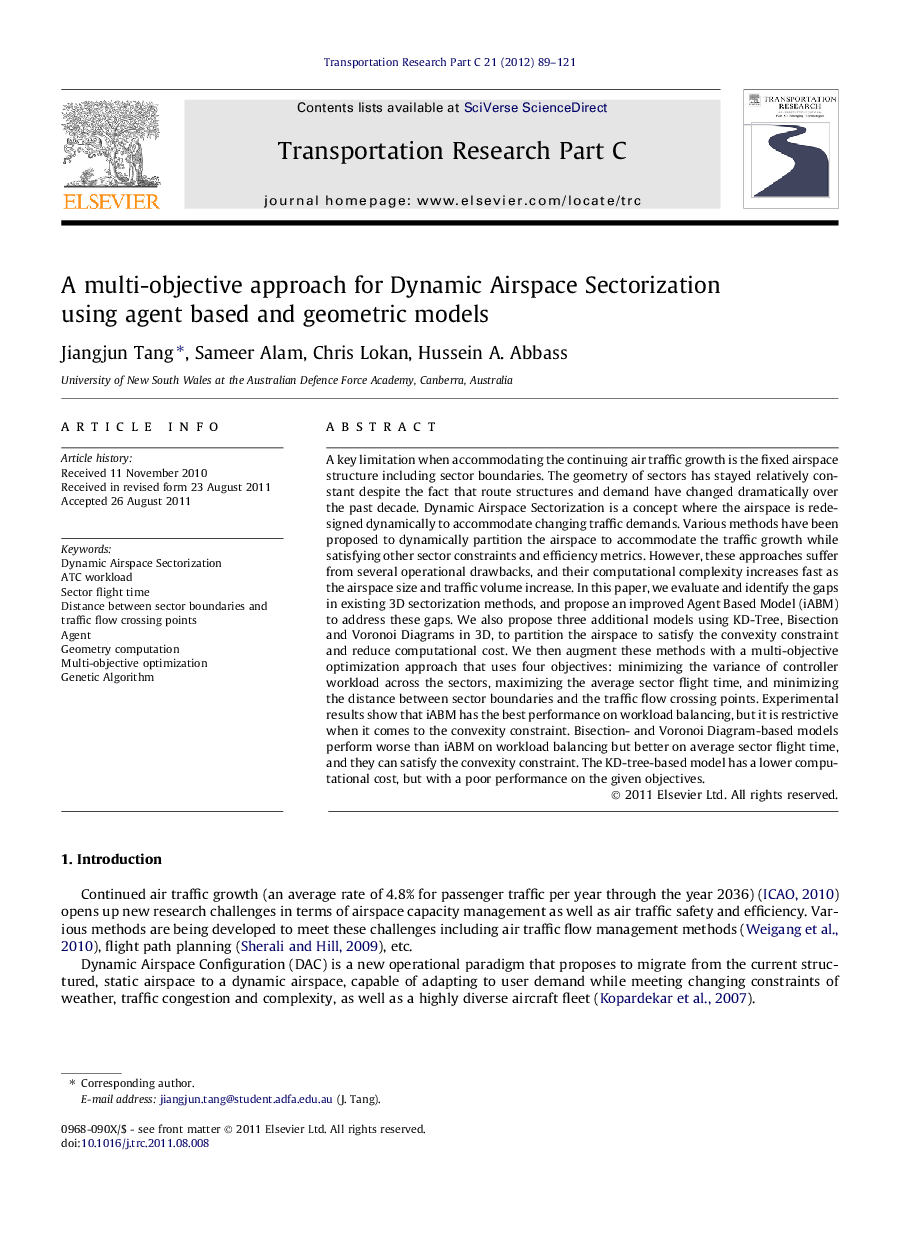| Article ID | Journal | Published Year | Pages | File Type |
|---|---|---|---|---|
| 525418 | Transportation Research Part C: Emerging Technologies | 2012 | 33 Pages |
A key limitation when accommodating the continuing air traffic growth is the fixed airspace structure including sector boundaries. The geometry of sectors has stayed relatively constant despite the fact that route structures and demand have changed dramatically over the past decade. Dynamic Airspace Sectorization is a concept where the airspace is redesigned dynamically to accommodate changing traffic demands. Various methods have been proposed to dynamically partition the airspace to accommodate the traffic growth while satisfying other sector constraints and efficiency metrics. However, these approaches suffer from several operational drawbacks, and their computational complexity increases fast as the airspace size and traffic volume increase. In this paper, we evaluate and identify the gaps in existing 3D sectorization methods, and propose an improved Agent Based Model (iABM) to address these gaps. We also propose three additional models using KD-Tree, Bisection and Voronoi Diagrams in 3D, to partition the airspace to satisfy the convexity constraint and reduce computational cost. We then augment these methods with a multi-objective optimization approach that uses four objectives: minimizing the variance of controller workload across the sectors, maximizing the average sector flight time, and minimizing the distance between sector boundaries and the traffic flow crossing points. Experimental results show that iABM has the best performance on workload balancing, but it is restrictive when it comes to the convexity constraint. Bisection- and Voronoi Diagram-based models perform worse than iABM on workload balancing but better on average sector flight time, and they can satisfy the convexity constraint. The KD-tree-based model has a lower computational cost, but with a poor performance on the given objectives.
► Gap identification and evaluation of existing 2D and 3D sectorization methods. ► Four new methods for 3D: iABM, KD-tree, Bisection and Voronoi Diagram. ► Native modeling of sectorization problem as a multi-objective optimization problem. ► Clear articulation of when to use each method is discussed.
